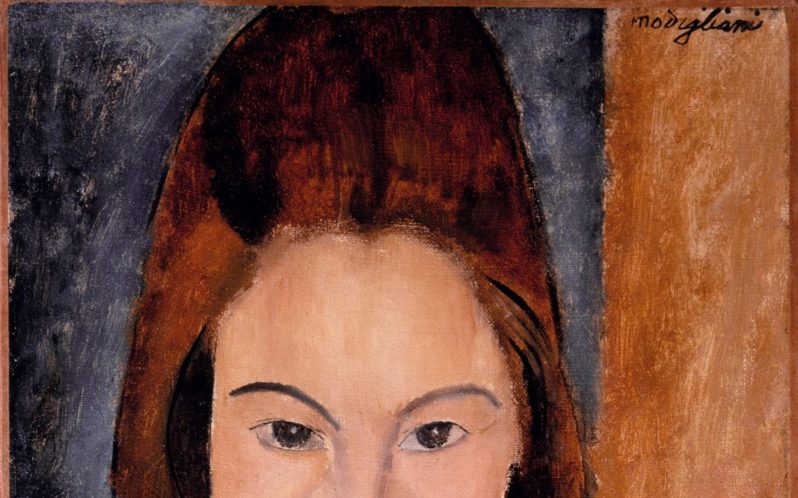The career

The artistic culture of Amedeo Modigliani is extended, heterogeneous and different from his peers. He loved the Italian art of the 14th century, he had seen classical art on his health journey between central and southern Italy, his culturale knowledge had expanded further in Venice, when he began to know the Impressionism, and then especially in Paris where he had been in touch with many and different artistic trends that the new generation of painters and sculptors were creating. Visiting museums he had expanded his culture to far-flung places, such as Parisian ethnographic museums.
In his early paintings the influence of Picasso and Toulouse-Lautrec (“The Jewish Woman”) emerged, later the influence of Cézanne (“The cellist”) that Modigliani discovered in the early Parisian years prevailed. It is true that in his early works clear artistic references emerge, but soon his style become defined: he makes all the models and influences his own, reworks them, to give life to his personal style, unmistakable and with innovative characters.
Part of his career focuses on sculpture: he began even before moving to Paris, fascinated by the artworks of Tino di Camaino, a great sculptor, seen in souther Italy. In Paris, a further step forward is taking place for his sculptural production thanks to the ideas he can take by visiting museums but also thanks to the research that is leading in this area the sculptor Constantin Brâncuși towards the rediscovery of tribal and African art. The ancient and medieval examples merge with this new research and origin to sculptures with elongated and schematic shapes, with few simple tracts. He realized two types of sculptures: female figures posing like caryatids or female heads. It is a search for essentiality that is also supported by the choice of material, the stone, probably also determined by the scarcity of economic resources at his disposal.
In 1914 he abandoned the sculpture, maybe also for protect as much as possible his uncertain health, dedicating himself exclusively to painting. His paintings are mostly portraits and female nudes. He worked very fast, was able to complete a portrait in few sessions and he never retouched his works. His paintings is characterized by the line that gives clear contours to the figures, making them stand out against a poorly defined background. A harmonious sign and a volumetric synthesis that absolutely does not take humanity and emotion from the portrayed figures.
Typical of his style, elements that make him famous all over the world today, are the thin and elongated necks, a sinuous elongation of the figures and the eyes, often almond-shaped and without pupils. In the portraits he represented his friends, his collectors and the women of his life and many say that being portrayed by Modigliani was like having the soul stripped.
Some portraits have a particular trait: an empty eye and one with the pupil, an eye that looks at the world and the other that looks inside. So represented are the eyes of artists and collectors, maybe for Modigliani the most capable to look inside themselves.
Also interesting are the short sentences or simple words that Modigliani writes in the portraits. They have the task of tell more about the person in the portrait. The portrait of Paul Guillaume, his patron and collector, can be an example. There is a short phrase “novo pilota”, in other words a new helmsman of the art world, an enlightened collector who supported modern art.
His nudes are characterized by voluptuous and sinuous shapes and great sensuality. At his time they caused a stir for their sensuality, as prove his first solo exhibition that was closed for outraging public decency.

